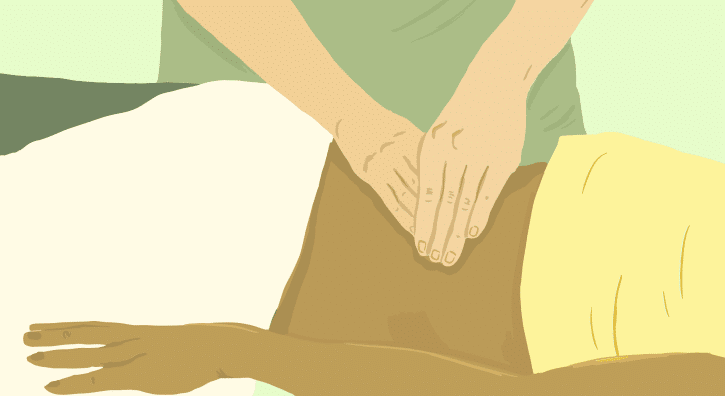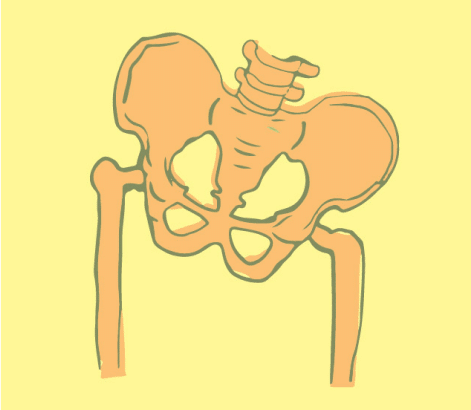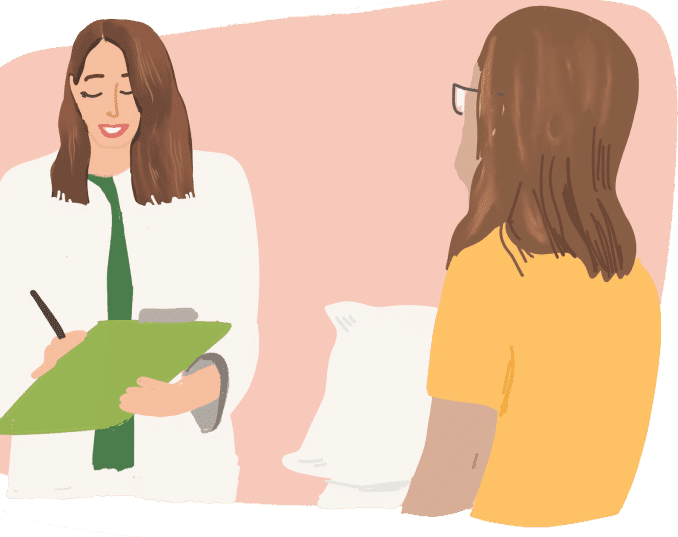

Symptoms
- Pelvic pain may present as a burning, aching, throbbing, or stinging sensation in the vaginal area, vulva, perineum, or around the anus
- Women often report pain during intimacy, discomfort when wearing tight clothing, and difficulty sitting for long stretches of time
- Some physical activities and exercise routines can make the pain worse
- Urinary symptoms such as urgency, frequent urination, discomfort while peeing, or occasional leakage are also common
- Digestive troubles like bloating, constipation, or irregular bowel habits may be present alongside the pain
- For some, pain is triggered by tampon insertion or sexual intercourse, while others experience symptoms with no obvious cause
- Symptom frequency varies widely—some women experience daily pain, while others have occasional flare-ups

Symptoms
- Pelvic pain may present as a burning, aching, throbbing, or stinging sensation in the vaginal area, vulva, perineum, or around the anus
- Women often report pain during intimacy, discomfort when wearing tight clothing, and difficulty sitting for long stretches of time
- Some physical activities and exercise routines can make the pain worse
- Urinary symptoms such as urgency, frequent urination, discomfort while peeing, or occasional leakage are also common
- Digestive troubles like bloating, constipation, or irregular bowel habits may be present alongside the pain
- For some, pain is triggered by tampon insertion or sexual intercourse, while others experience symptoms with no obvious cause
- Symptom frequency varies widely—some women experience daily pain, while others have occasional flare-ups

Associated Diagnoses
Diagnoses such as Endometriosis, Vulvodynia, Interstitial Cystitis/Painful Bladder Syndrome, Pudendal Neuralgia, Lichen Sclerosus, Lichen Planus, and Irritable Bowel Syndrome are associated with pelvic pain and pelvic floor dysfunction.


Causes of Pelvic Pain
- Frequent infections of the bladder or vagina, along with conditions affecting the GI, skin, urinary, or reproductive systems
- Most individuals experiencing chronic pelvic pain also have underlying pelvic floor dysfunction
- Certain medications, including birth control pills, acne treatments, and hormone-regulating therapies for PCOS or Endometriosis
- Surgeries involving the pelvic region—such as hysterectomy, prolapse correction, or childbirth-related procedures
- Physical trauma or injuries impacting the bones or muscles
- Misalignments or biomechanical issues like hip misalignment, scoliosis, SI joint problems, or differences in leg length
- Vaginal delivery during childbirth
- Hormonal shifts and tissue changes associated with menopause
- Genital trauma, including cutting or mutilation
Causes of Pelvic Pain
- Frequent infections of the bladder or vagina, along with conditions affecting the GI, skin, urinary, or reproductive systems
- Most individuals experiencing chronic pelvic pain also have underlying pelvic floor dysfunction
- Certain medications, including birth control pills, acne treatments, and hormone-regulating therapies for PCOS or Endometriosis
- Surgeries involving the pelvic region—such as hysterectomy, prolapse correction, or childbirth-related procedures
- Physical trauma or injuries impacting the bones or muscles
- Misalignments or biomechanical issues like hip misalignment, scoliosis, SI joint problems, or differences in leg length
- Vaginal delivery during childbirth
- Hormonal shifts and tissue changes associated with menopause
- Genital trauma, including cutting or mutilation

Diagnostic Challenges
Research shows that women with pelvic pain often wait years before receiving the correct diagnosis—on average, about five years, and up to 11 years in cases involving Endometriosis. This extended delay is largely due to the fact that pelvic pain can closely resemble symptoms of other issues like bladder infections, STIs, yeast infections, and urinary tract disorders. Many women end up facing repeated misdiagnoses and go through treatments that offer little to no relief. When the true culprit is pelvic floor dysfunction, routine medical tests often fail to identify the issue, leaving both patients and doctors puzzled. It’s common for women to start physical and occupational therapy without any prior knowledge of the pelvic floor or its connection to their ongoing symptoms.
Diagnostic Challenges
Research shows that women with pelvic pain often wait years before receiving the correct diagnosis—on average, about five years, and up to 11 years in cases involving Endometriosis. This extended delay is largely due to the fact that pelvic pain can closely resemble symptoms of other issues like bladder infections, STIs, yeast infections, and urinary tract disorders. Many women end up facing repeated misdiagnoses and go through treatments that offer little to no relief. When the true culprit is pelvic floor dysfunction, routine medical tests often fail to identify the issue, leaving both patients and doctors puzzled. It’s common for women to start physical and occupational therapy without any prior knowledge of the pelvic floor or its connection to their ongoing symptoms.
Treatment:
How We Can Help You

If you’re a woman in Glendale grappling with persistent pelvic pain, a pelvic floor physical and occupational therapy evaluation might finally provide the clarity and direction you’ve been seeking. This in-depth assessment takes into account your full medical background, including previous diagnoses, treatment approaches you’ve pursued, and how successful—or unsuccessful—those interventions have been. We understand that by the time many women in Glendale seek help, they’re emotionally worn out and feeling defeated by a lack of answers. Your physical and occupational therapists will conduct a comprehensive exam, checking for issues in muscles, connective tissues, nerves, joint function, and how your body moves overall. Based on these findings, you’ll receive a thorough explanation of what’s contributing to your pain and a tailored treatment plan that outlines both immediate steps and long-term goals. Most women attend therapy one to two times per week over a span of about 12 weeks, complemented by custom at-home exercises to reinforce your progress. Our team also communicates closely with other healthcare professionals to ensure coordinated, effective care. We’re committed to helping you reclaim your comfort and confidence.

Treatment:
How We Can Help You
If you’re a woman in Glendale grappling with persistent pelvic pain, a pelvic floor physical and occupational therapy evaluation might finally provide the clarity and direction you’ve been seeking. This in-depth assessment takes into account your full medical background, including previous diagnoses, treatment approaches you’ve pursued, and how successful—or unsuccessful—those interventions have been. We understand that by the time many women in Glendale seek help, they’re emotionally worn out and feeling defeated by a lack of answers. Your physical and occupational therapists will conduct a comprehensive exam, checking for issues in muscles, connective tissues, nerves, joint function, and how your body moves overall. Based on these findings, you’ll receive a thorough explanation of what’s contributing to your pain and a tailored treatment plan that outlines both immediate steps and long-term goals. Most women attend therapy one to two times per week over a span of about 12 weeks, complemented by custom at-home exercises to reinforce your progress. Our team also communicates closely with other healthcare professionals to ensure coordinated, effective care. We’re committed to helping you reclaim your comfort and confidence.
How Can We Help You?
If you have any questions or feedback you’d like to share, please take a moment to complete the form provided below. Don’t forget to include your email address so we can get back to you with a direct and timely response. We want you to know that any details you provide will be handled with the utmost confidentiality and care.

Join The Newsletter. Win a copy of our book, “Pelvic Pain Explained!”
We love getting to know our website visitors. Please tell us a little bit about yourself and get the latest info via PHRC e-newsletter!
*Subscribers automatically eligible to win our book, “Pelvic Pain Explained.”
Pelvic Pain Explained is fundamentally about uncovering the origins of pelvic pain, highlighting the challenges patients and medical professionals face in pinpointing a diagnosis, navigating through the often confusing landscape of treatment options, and addressing the emotional and interpersonal toll that comes with managing an invisible condition.


